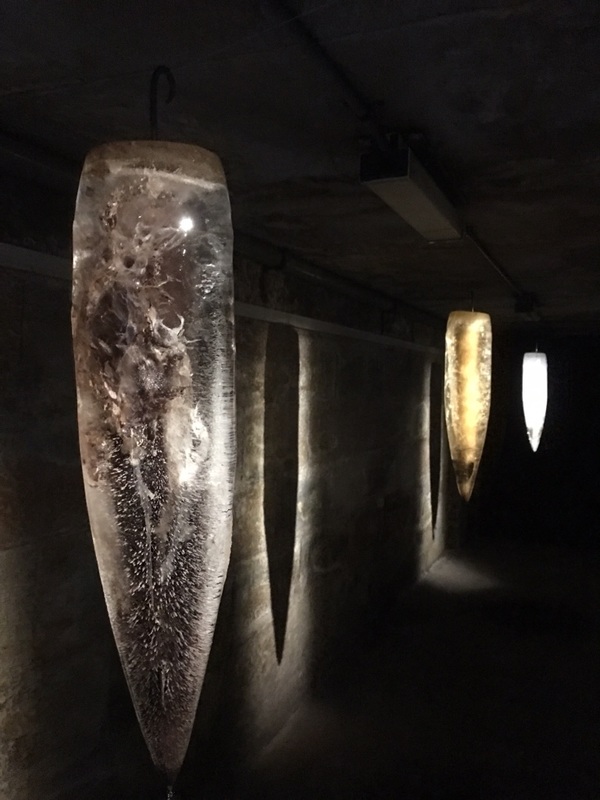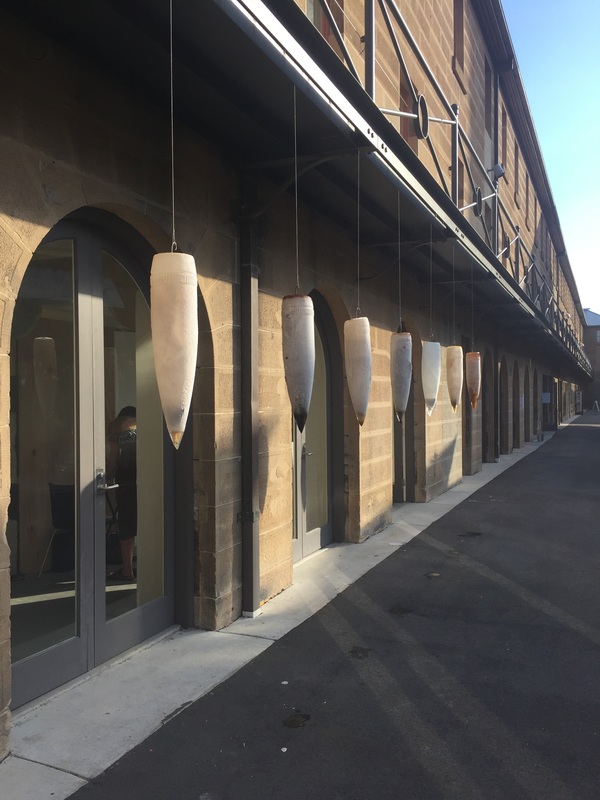territory (2016)
Ice, steel
80 x 14 cm
80 x 14 cm
Territory is a response to the ongoing military conflicts in the world, in particular in the Middle East between the Arabs and Israelis. It employs the repetitive motif of a 155-millimeter artillery shell, a weapon used in the Middle East and one of the most common weapons used in wars, past and present.
Unlike the lethal originals, the shells in the artwork - formed in a mould taken of a defunct Australian artillery shell - are made of ice. Each shell contains a core skeletal structure of a steel arrow, which remains in-situ and is fully revealed as the ice melts.
The choice of the ephemeral material of ice is made for several reasons. Primarily, to symbolise a wish that real warheads might be as benign as water. Further, to explore the real-time melting process of the shells, to suggest the process of conflict: its steady dripping, its staining and ultimately its invasive and destructive impact.
The shells are made of clear water or spice water, cardamom, cumin, turmeric and cloves, spices used in both Arab and Israeli cooking. By using these shared spices, the common genetic origin of the Arabic and Jewish people is recalled. The presence of the herbs also juxtaposes a comforting domestic scent alongside a cold military reality, disturbingly a daily experience for many people.
Unlike the lethal originals, the shells in the artwork - formed in a mould taken of a defunct Australian artillery shell - are made of ice. Each shell contains a core skeletal structure of a steel arrow, which remains in-situ and is fully revealed as the ice melts.
The choice of the ephemeral material of ice is made for several reasons. Primarily, to symbolise a wish that real warheads might be as benign as water. Further, to explore the real-time melting process of the shells, to suggest the process of conflict: its steady dripping, its staining and ultimately its invasive and destructive impact.
The shells are made of clear water or spice water, cardamom, cumin, turmeric and cloves, spices used in both Arab and Israeli cooking. By using these shared spices, the common genetic origin of the Arabic and Jewish people is recalled. The presence of the herbs also juxtaposes a comforting domestic scent alongside a cold military reality, disturbingly a daily experience for many people.

